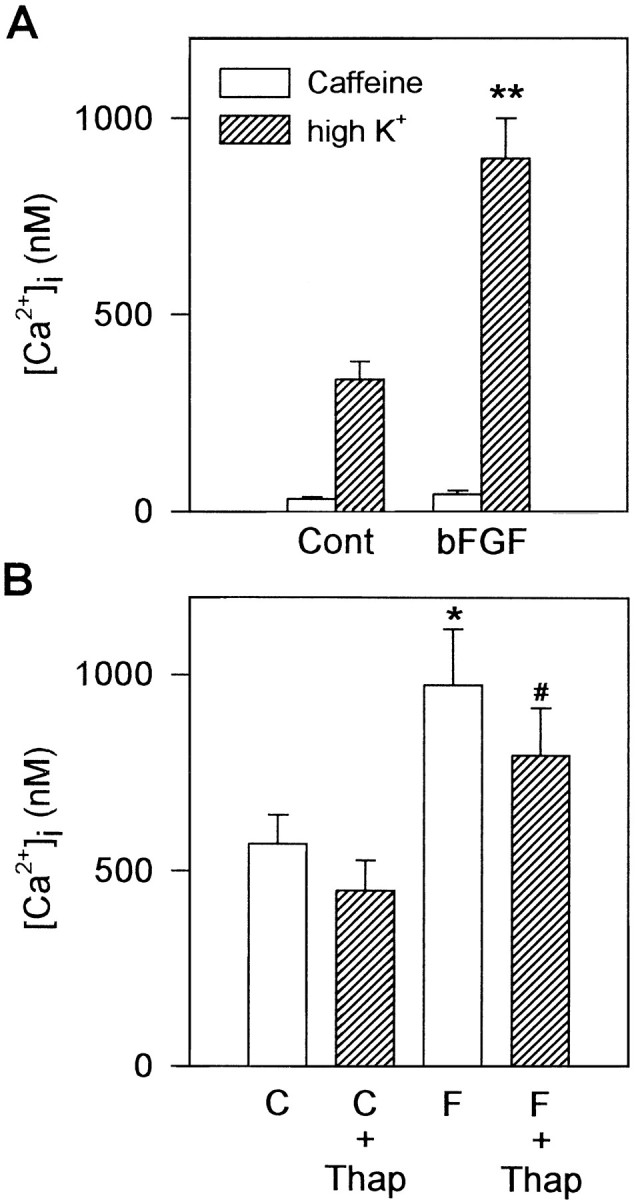Fig. 2.

Intracellular Ca2+ stores are not major contributors to depolarization-induced Ca2+responses. A, Caffeine (50 mm) was administered for 15 sec, before the challenge with 50 mmK+. Caffeine-induced Ca2+ transients (open bars) were small in both control and bFGF-treated neurons. Even after the application of caffeine, Ca2+responses to high K+ depolarization (hatched bars) were significantly larger in bFGF-treated neurons compared with those in control neurons. B, Thapsigargin (Thap; 1 μm) was administered for 3 min, before the high K+ challenge. Although the amplitude of Ca2+ transients was reduced slightly by thapsigargin pretreatment (hatched bars) in both control (C) and bFGF-treated (F) neurons compared with groups not treated with thapsigargin (open bars), bFGF-treated neurons still showed larger Ca2+ responses compared with controls. Significance of difference was determined using Duncan’s multiple-range test; *p < 0.05, **p < 0.01 versus control group; #p < 0.05 versus thapsigargin-treated control group.
